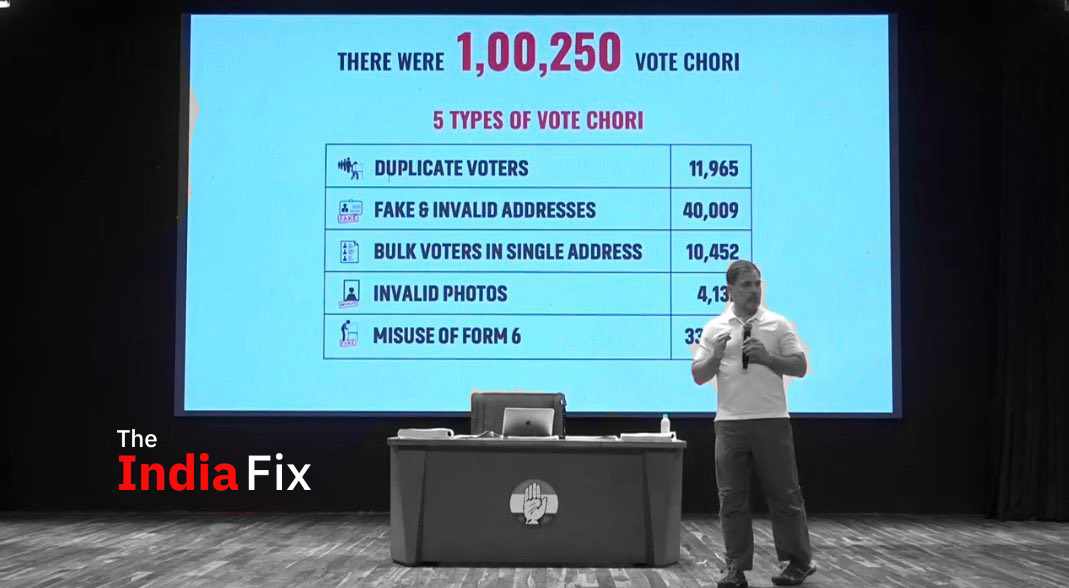
Welcome to The India Fix by Shoaib Daniyal, a newsletter on Indian politics. To get it in your inbox every Monday, sign up here. Have feedback, interesting links or memes? Send them to shoaib@scroll.in.
Other than awarding a perfect score to every budget, Indian industrialists rarely comment on public issues. So on Tuesday, when Kiran Mazumdar-Shaw, founder of biotechnology giant Biocon took to Twitter to decry Karnataka’s “communal exclusion”, it was a significant moment, underlining just how sharp the state’s turn towards radical politics has been.
For months now, the southern state of Karnataka has been on the boil as Hindutva groups launch campaign after campaign against the state’s minorities. January saw mobilisation against the wearing of the hijab in some colleges. Some Hindu male students started a coordinated campaign to wear saffron scarves to class in order to force colleges to ban the hijab.
This politics was eventually backed up by the state, with the Karnataka government as well as the Karnataka High Court endorsing the ban. While the court order received flak from legal scholars, that it had eventually upheld the aims of the Hindutva mobilisation points to how powerful the politics had been.
With the hijab ban in place, Hindutva groups in Karnataka have now moved on to trying to restrict Muslim livelihoods. On Friday, the Karnataka Police arrested seven members of the Bajrang Dal in connection with two incidents of assault over the selling of halal meat in Shivamogga district. Simultaneously, Hindutva groups are placing pressure to ban Muslim vendors from temple fairs.

Before this, in 2021, the state assembly had passed an anti-conversion bill, the state government had surveilled churches in order to check so-called forced conversions and Christians had seen physical attacks from Hindutva groups. In fact, a fact-finding report stated that Karnataka was third in the number of attacks on Christians in 2021.
Party tussle
What explains this sudden surge in Hindutva in Karnataka? Part of the answer lies, paradoxically, in how weak the ruling BJP is. The saffron party is in office after engineering defections and bringing down the Janata Dal (Secular)-led government. Sworn in as chief minister at the time, BS Yediyurappa, the BJP’s tallest leader in the South, soon fell afoul of the party’s high command and gave way to Basavaraj Bommai in July.
Bommai is a political lightweight with no practically no independent base in the state. In fact, in bye-polls held only a few months after he was sworn in, the BJP lost an Assembly seat located in the chief minister’s home district to the Congress. This lack of power means Bommai has capitulated completely to the BJP’s hard Hindutva faction in Karnataka. The old Karnataka BJP, which was relatively one of the more moderate state units of the saffron party, practically ceased to exist with the ouster of Yediyurappa.
With no Yediyurappa, the BJP’s old caste calculus is shaky given that had bought over the state’s largest caste, the Lingayats, to the saffron fold. Instead, it seems the party is banking heavily on Hindutva to see it through, with speculation that the state might see elections later this year.
Gateway to the South
However, current politics by itself does not explain the depth of Hindutva in the state. Hindutva is often seen as a primarily North Indian phenomenon. Indeed, the Bharatiya Janata Party has a fairly sparse presence in the Dravidian-speaking South compared to the North and the West. However, one exception to that is Karnataka, where the BJP and the ideology of Hindutva has been quite popular for the past three decades.
Like in the rest of India, the BJP story in Karnataka starts from the 1990s with the movement to build a temple in place of the Babri Masjid in Uttar Pradesh. Even before this, however, top RSS leaders were drawn from the state. This includes HV Seshadri, general secretary for nine years since 1987 and current post holder Dattatreya Hosabale. KS Sudharshan, head of the RSS from 2000-2009, was also a Kannadiga, albeit born in Raipur.
Part of this Hindutva success owes itself to the unique nature of Karnataka in the South. Karnataka has no strong state party unlike Tamil Nadu or the two Telugu states. Part of this, in turn, could be attributed to the relatively weak status of a language identity in the state. In fact, unusually for a state carved out on linguistic lines, only two-thirds of people in the state are native Kannada speakers. Moreover, there exist strong divisions even among Kannadigas in the state, given the colonial history of the region was split under different adminstrations: Mysore, Bombay, Madras and Hyderabad.

With no strong state parties, the BJP grew in Karnataka when the Congress declined in the 1990s. The saffron party was also helped by the fact that politics in Karnataka was arranged heavily along caste lines. When Lingayats, influential in terms of power as well as numbers, felt disenchanted with the Congress in the 1990s, they eventually moved to the BJP in response.
Risky gambit
Of course, politics being powered by expedient caste calculations might win electoral support but it does not guarantee ideological fidelity. On Tuesday, for example, two BJP legislators in Karnataka openly opposed the ban on Muslims in fairs. While Karnataka is seeing comparisons with Uttar Pradesh and Gujarat, this would be unlikely in those states where Hindutva has much deeper ideological roots.
However, it seems that the BJP is now trying to drastically this facet of Karnataka politics by attempting to create an Uttar Pradesh-style “Hindu vote” which sits over and above caste. This would go some way in explaining why the BJP has floored the pedal on Hindutva ever since Yediyurappa was shown the door. But as the internal dissension and even the protests from business leaders in the state show, it won’t be an easy win for the saffron party in Karnataka.






















Write a comment ...